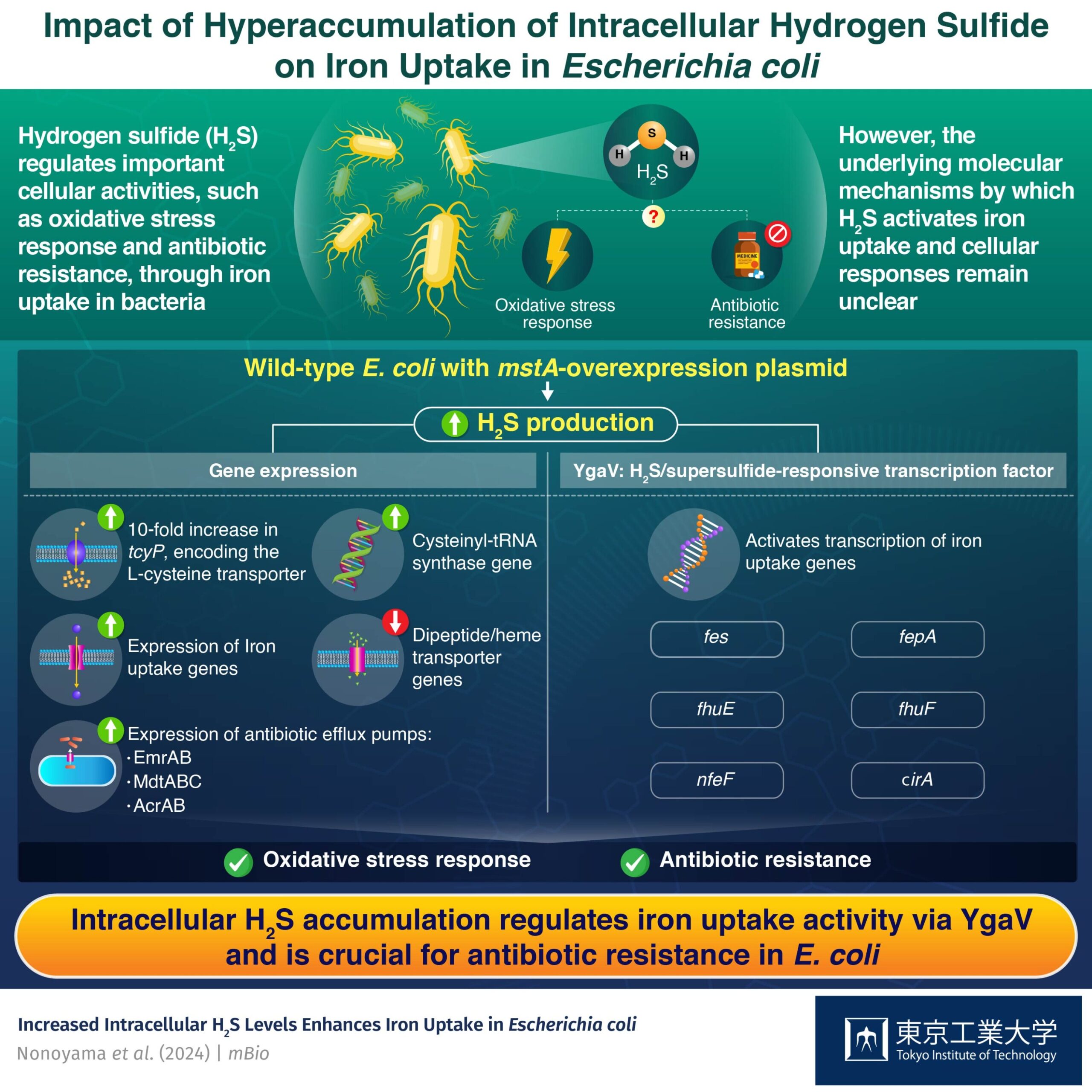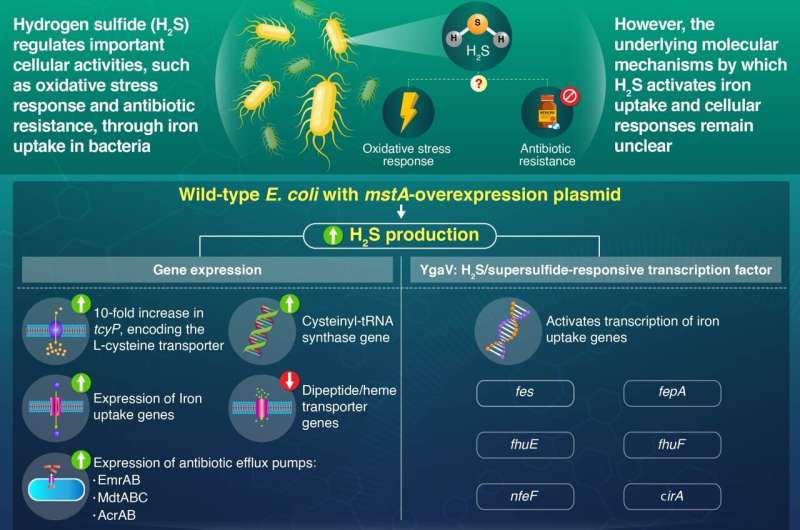

Antibiotic resistance and oxidative stress response are important biological mechanisms that help bacteria thrive, especially pathogenic bacteria like Escherichia coli. Hydrogen sulfide (H2S), a chemical messenger molecule, regulates several intracellular activities in bacteria such as responses to oxidative stress and antibiotics.
Increased iron uptake triggered by intracellular H2S levels has been identified in the pathogenic bacterium Vibrio cholerae, contributing to its oxidative stress response. However, the precise mechanism behind H2S dependent cellular responses of E. coli remains unclear.
A team of researchers led by Professor Shinji Masuda from the Department of Life Science & Technology, Tokyo Institute of Technology, Japan have attempted to unravel the underlying mechanism and relationship between intracellular H2S and iron uptake in E. coli. They utilized a genetically manipulated wild-type (WT) E. coli strain overexpressing mstA, which encodes 3-mercaptopyruvate sulfur transferase enzyme responsible for the production of H2S.
Additionally, they employed advanced genetic sequencing techniques and assays to identify the molecular pathways involved in the overall regulation of iron uptake in response to H2S availability. Their findings were published in the mBio journal.
Sharing the motivation and rationale behind the present research, Masuda states, “Our research group had previously identified and characterized the arsenic repressor-type H2S-/supersulfide-responsive transcription factor SqrR in the purple photosynthetic bacterium Rhodobacter capsulatus, where SqrR regulated gene expression in response to H2S availability.
“YgaV, the SqrR homolog in E. coli, has also been reported for repressing the transcription of anaerobic respiratory genes in the absence of extracellular sulfide. This motivated our team to further investigate the relationship between intracellular H2S, YgaV dependent transcription, and iron uptake in E. coli.”
Initially, the researchers observed that the WT strain overexpressing mstA produced elevated levels of intracellular H2S which resulted in significantly higher antibiotic resistance. Subsequently, they conducted RNA sequencing analysis and found that certain genes were upregulated in response to the overproduction of H2S. They noted a 10-fold increase in the genetic transcript levels of tcyP, which encodes the L-cysteine (a sulfur containing amino acid) transporter.
In addition, they found that cysteinyl-tRNA synthase gene, which catalyzes the synthesis of supersulfides-molecules with self-linked sulfur atoms, was particularly upregulated. Supersulfides can directly inactivate β-lactam antibiotics and contribute to the overall antibiotic resistance in E. coli with mstA overexpression.
Moreover, genes associated with antibiotic efflux pumps were upregulated and dipeptide/heme transporter genes were downregulated in the WT strain overexpressing mstA, indicative of the influence of H2S hyperaccumulation on iron uptake.
Furthermore, the researchers confirmed the role of YgaV, a H2S-/supersulfide-responsive transcription factor, in the upregulation of iron uptake genes in E. coli. By utilizing a ΔygaV mutant strain of E. coli where ygaV is not expressed but mstA is overexpressed, they discovered that the expression of iron uptake genes, namely, fes, fepA, fhuE, fhuF, nfeF, and cirA was dependent on the presence of YgaV, which in turn is dependent on intracellular H2S levels.
“Our study provides valuable insights into the iron uptake dynamics in E. coli and substantiates the role of H2S-dependent YgaV in regulating the overall oxidative stress response and antibiotic resistance,” concludes Masuda.
More information:
Shouta Nonoyama et al, Increased intracellular H2S levels enhance iron uptake in Escherichia coli, mBio (2024). DOI: 10.1128/mbio.01991-24
Journal information:
mBio
Provided by
Tokyo Institute of Technology
Citation:
Exploring the role of hydrogen sulfide in the expression of iron uptake genes in E. coli (2024, September 27)
retrieved 27 September 2024
from https://phys.org/news/2024-09-exploring-role-hydrogen-sulfide-iron.html
This document is subject to copyright. Apart from any fair dealing for the purpose of private study or research, no
part may be reproduced without the written permission. The content is provided for information purposes only.